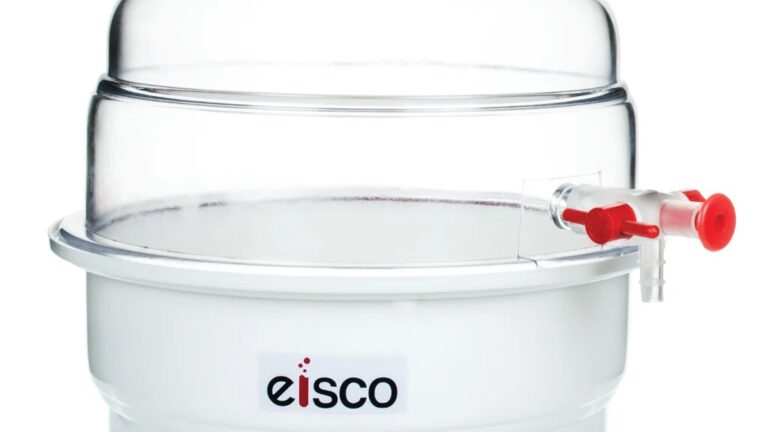Desiccators are essential laboratory tools designed to store and preserve moisture-sensitive items. They create a dry environment, protecting items from humidity, which can cause chemical reactions, degradation, or contamination. Understanding desiccators, their types, and their applications is crucial for many scientific and industrial processes: roland.co.id.
What is a Desiccator?
A desiccator is an airtight container that contains a desiccant, a substance that absorbs moisture. The primary purpose of a desiccator is to maintain a low-humidity environment to protect hygroscopic materials (materials that absorb moisture from the air) and ensure the stability of certain chemical compounds.
Types of Desiccators
Desiccators come in various designs, each suited for specific applications. Here are the most common types:
1. Standard Desiccators
Standard desiccators are typically made of glass or plastic and have a removable lid sealed with grease or a gasket. Inside, a perforated plate holds the items above the desiccant, which is usually placed at the bottom.
2. Vacuum Desiccators
Vacuum desiccators are similar to standard desiccators but can be connected to a vacuum pump to remove air, reducing the pressure inside. This setup enhances the drying process and is useful for materials that require extremely low humidity.
3. Automatic Desiccators
Automatic desiccators are advanced units that use built-in sensors and controls to maintain a constant low-humidity environment. They are ideal for applications that require precise humidity control over extended periods.
Desiccants Used in Desiccators
Several desiccants can be used in desiccators, each with unique properties and applications:
1. Silica Gel
Silica gel is the most common desiccant. It is highly efficient, non-toxic, and available in various forms, including beads and packets. Silica gel changes color as it absorbs moisture, making it easy to determine when it needs to be replaced or regenerated.
2. Calcium Chloride
Calcium chloride is another widely used desiccant known for its high moisture absorption capacity. It is often used in situations where a large amount of water vapor needs to be removed.
3. Molecular Sieves
Molecular sieves are man-made zeolites with consistent pore dimensions. They are highly effective in trapping moisture and can be used at higher temperatures compared to other desiccants.
Applications of Desiccators
Desiccators are used in a variety of fields and applications, including:
1. Chemical Laboratories
In chemical laboratories, desiccators store hygroscopic chemicals and reagents to prevent them from absorbing moisture and undergoing unwanted reactions. They are also used to dry samples and maintain the stability of sensitive compounds.
2. Pharmaceutical Industry
The pharmaceutical industry uses desiccators to store active pharmaceutical ingredients (APIs) and finished products that are sensitive to humidity. This helps in maintaining the efficacy and shelf life of the products.
3. Electronics
Desiccators protect electronic components and devices from moisture, which can cause corrosion, short circuits, and other malfunctions. This is especially important for long-term storage and transport.
4. Museums and Archives
In museums and archives, desiccators preserve valuable artifacts, documents, and artworks by preventing moisture damage. This helps in maintaining the integrity and longevity of these items.
Conclusion
Desiccators are indispensable tools in various scientific, industrial, and preservation settings. Understanding their types, the desiccants used, and their applications can help in selecting the appropriate desiccator for specific needs. By maintaining a controlled, low-humidity environment, desiccators ensure the integrity and stability of moisture-sensitive materials, making them a crucial component in many fields.

